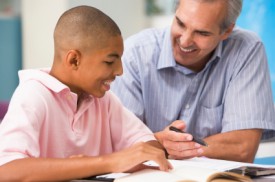
While each educator has their own techniques for getting themselves and their students involved in the task at hand, guided reading activitiesoffer wonderful structures for bringing students and their teachers together, and engaging both in the teaching and learning process. At its essence, guided reading is a metacognitive activity; it gets students and their teachers to think together about how they think about reading. By literally guiding students through reading, it instills the habit in students of being fully present in the process. Such habits not only lay the foundation for effective reading skills, but they build successful strategies that will lead to a life-long love of the reading adventure.
What do guided reading activitieslook like? While these activities can take many forms, they can be as simple as questions designed to create thoughtful, intentional approaches to a text and create connections before, during and after reading.
Before diving into a text, guided reading questions we could pose to young students might be:
- What do you think the artwork on the cover means?
- Based on the title, what do you think the story will be about?
- As you flip through the book and glance at the pictures, what do you think the story will be about?
During reading, we can stop students along the way and re-engage them through asking:
- What does that picture mean to the story? How does it make you feel?
- What do you think will happen next?
- Why did that character do that?
- What would you do if you were that character?
After reading, strategically formulated guided reading questions can help students connect to and appreciate a story:
- Can you summarize the story?
- How does what really happened compare with what you predicted would happen?
- Who was your favorite character and why?
- What was your favorite part of the story?
Additional guided reading activities may include creative exercises such as writing letters to characters, drawing pictures inspired by stories, or writing alternative endings.
These processes and teaching techniques are most effective for small groups or one-on-one instruction, as they depend upon a high level of personal interaction and response with the teacher. (Thereby lies one of the reasons that Scientific Learning’s Reading Assistantis so effective; it employs many activities formulated on the principles behind guided reading.)
On a closing note, these kinds of simple questions are not only great for engaging students in the classroom, but also at home. If we as educators can offer these as examples to parents, imagine how much we can help them make even the simplest bedtime story a more engaging, meaningful experience for a child.

